Optically Thick Case
Radiative Transfer
Until now:

![]()
But what if absorption occours?
![]()
But what if it gets very thick?
Then dI
n = 0![]()
Let us look at this more closely.
Consider the particles doing the absorbing and emitting.
Take two states upper, U, and lower, L.
Separate them by EU - EL = h
nThen Boltzman tells us:
![]()
also, in equilibrium
![]()
AUL = spontaneous emission
I
nBUL = stimulated emissionNLBLUI
n = absorptioncombine
![]()
let T --> infinity, therefore I --> infinity
then ![]()
So in general, in equilibrium
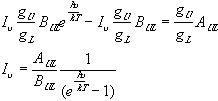
Can be shown using box normalization and quantum mechanics that (in most circustances)
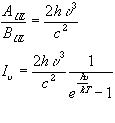 Blackbody radiation erg cm-2
s-1 Hz-1 st
Blackbody radiation erg cm-2
s-1 Hz-1 st
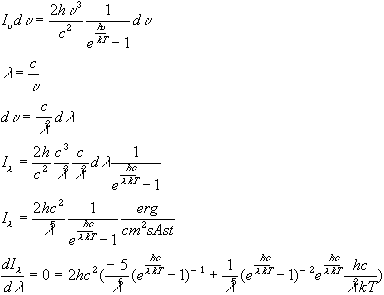
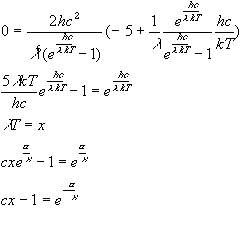
Wien Law ![]() A*K
A*K
Remember, sun: T=5000
lm=5000 lT = 25*106Next look at low
n end hn << kT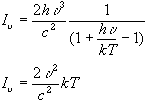
Rayleigh-Jeans law
Can’t measure T if Area unknown very inconvient if h
n = kT region hidden
Finally -- total emission


From a flat dA
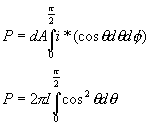
![]()
Review
Basic
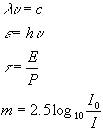
Radiation from a charge

Cyclotron

Synchrotron

Bremsstrahlung
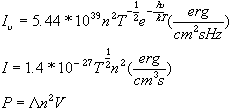
Compton Scattering

Blackbody
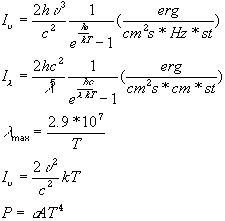
Sun is a star
Star is a ball of gas with an energy source in the middle
Chemical Energy

Gravitational Energy


Nuclear
1MeV per particle instead of 2eVE = 5 * 105 * 4 * 1045 = 2 * 1051 ergs
t
= 15 * 109 years -- very close to correct!What is the theral timescale of the Sun?
Thermal content at core 106K

Takes 106 years to change significantly
Lets make a star
 Ball of gas at mass M
Ball of gas at mass M
Collapses Gravitationally
For a few thousand years chemical processes have an effect (very short time)
Gravity holds it together
Thermal Pressure holds it up
Balance the two and you have a star
P = nkT ideal gas law
![]()
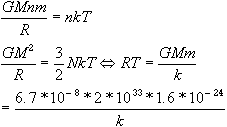
RT=1.5*1018 cm deg
Chemical energy dissipates 1000 years
Gravitational energy dissipates in 3*107 years
Keeps contracting until nuclear burning sets in at T=15 million
![]()
Equilibrium is achieved
If R decreases then T increases
If T increases L increases
If L increases T increases more
If T increases R increases
Stable equilibrium is achieved